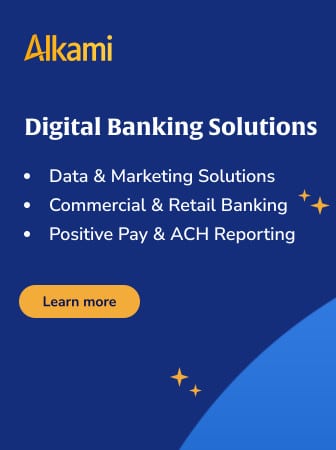Much has been written about Generation Y or, as they are more commonly known, the Millennials’, potentially disruptive culture. Quite apart from being the largest generation in world history, the Millennials, like any other demographic, are a generation of individuals that spans a range of personality types.
The influence of the digital era has, without a doubt, made this generation more alike than the previous two generations … the common ground being their permanently connected mindset.
While Millennials may be the first generation to throw up real recruiting challenges, particularly for the banking sector, they are the generation, if properly harnessed, who is most likely to provide financial institutions with the talent to make the monumental shift away from the traditionalist roots that appear to be weighing the industry down.
A Challenging Legacy
In the 2016 Edelman Trust Barometer, where consumers were asked to rank businesses in terms of how much they trust those businesses to “do the right thing,” financial services ranked last on a list of eight industries in the 25-country survey, with a 51% trust rating. The good news is that public trust in financial services has increased 8% since the 2012 survey.
Certainly the finance industry faces some unique challenges, from regulatory control that continues to reshape the sector to continually evolving digital transformations flipping the well-honed processes on their heads. Yet, despite this, little has changed in relation to business strategy over the last century.
By concentrating on cost containment rather than differentiation, the financial industry has gained a reputation for being neither innovative or creative, an industry that works its people hard and where the drive for profit overrides almost every other consideration.
As challenger banks increasingly gain ground, executives of incumbent financial institutions know that they must do things very differently to survive, let alone compete.

The unfair advantage for financial brands.
Offering aggressive financial marketing strategies custom-built for leaders looking to redefine industry norms and establish market dominance.

Creating A Community with CQRC’s Branch Redesign
Find out how SLD helped CQRC Bank to create the perfect harmony of financial services, local culture, and the human touch in their branch transformation.
Read More about Creating A Community with CQRC’s Branch Redesign
Changing Current Culture
The question, then, is: “How do we acquire the game-changing talent we need to drive us forward?”
One starting point is at the junior level or with university graduates. Recruitment managers first need to establish what changes in career attitudes towards banking have taken place, how the Millennials perceive the industry, and how they associate banking in their everyday life.
Particularly with retail banking (rather than investment banking), one answer has already been addressed in recent report from global performance-management consulting company Gallup. Even though they use more banking channels than any other generation, Millennials report the most problems and are the generation least likely to have their problems resolved. Furthermore, as found in the Digital Banking Report, “The Power of Personalization in Banking,” Millennials don’t believe their has their best interests at heart, that the relationship they have is very strong or will help them reach their financial goals.
It stands to reason that if they are dissatisfied with the industry as customers they will not be drawn to it from a career perspective. This is a fundamental issue banking executives must address. First, they need to look inwardly – at the current culture of the organisation – before searching outwardly for talent.
To attract the very best people requires banks to behave in a way that they are not accustomed to. For many, it will require shifting their current culture to a culture that is geared towards attracting transformative talent.
Micro-managing and transactional management styles are no longer viable for the new generation of employees. A management style that is agile, transformational, and has a fail-fast approach will certainly be a requirement for fast-forwarding the industry as a whole.
Shifting Perceptions
Emphasis on some core roles is already starting to shift. As data becomes ever more refined, those people who combine data analysis with marketing skills are increasingly being sought. While major banks have been using customer data to provide insights into consumer behavior and to improve customer services for years, incorporating big data as a standalone functional department, where big data teams can communicate key insights, will extract better value from data in the long-term.
However to be truly effective banks need to do away with siloed functions and open up all their data in a central location that will benefit every department within the organisation.
In order to capitalise on the opportunities that lie ahead, the search is on for talent capable of reshaping the business strategy. This talent needs to be both tech savvy and customer-centric and able to take the traditionalists firmly into the digital era.
At a junior level, Millennials don’t go searching for a job inasmuch as they go searching for an opportunity. They want a position that will provide a good work/life balance and they place greater emphasis on ethics, corporate social responsibility and the environment than do previous generations.
While currently banks are not considered in the top ranks of ideal places to build a career, those considering a career in the finance sector do associate banks (particularly investment banks) with prestige and a place to earn a good salary. Millennials also place greater emphasis on training and career development than they do money, so there are great opportunities here for hiring managers. Banks, in essence, have good training schemes, but they need to place greater emphasis on these training and development programs, alongside future career opportunities (and being very transparent about them) if they are to attract young talent.

Building a New Culture Through Hiring
At the senior management level, cultural transformation is one of the biggest challenges banks face. At the very top of the organization, the CEO must adopt the role of cultural transformational officer in order to develop the cultural leadership teams capable of driving this change forward.
Potential candidates will have first-hand experience of transformational change and innovation, and definitely be customer-centric. They will probably come from outside the banking industry – possibly from the telco sector, which breeds strong leaders who are used to continually evolving, or the big management consultancies who produce potential young game changers.
There are multiple stages of engagement when it comes to attracting these people. However, if banks can convince them that they will have a free hand in driving change and that they can be part of something where they can make a significant difference, then that’s an excellent starting point. Compensation is obviously important, but it’s a hygiene factor not a motivator.
For the bank to undergo a cultural shift and operate in a way that it has not done in the past, may require buy-in from the board. Just like executives who have experience in transformational change, boards must also have non-executive directors who understand agile cultures and who can support the CEO in achieving the required cultural objectives.
The need for existing financial organizations to innovate has never been greater. The payoff for engaging and investing more in the Millennial generation will be substantial and, for many, may well be a defining point.
Building a focused and flexible workforce will enable banks to seize the opportunities that will come from developing an organization that is not only customer-centric and digitally capable, but also flexible enough to regularly re-tune its brand both internally and externally.







